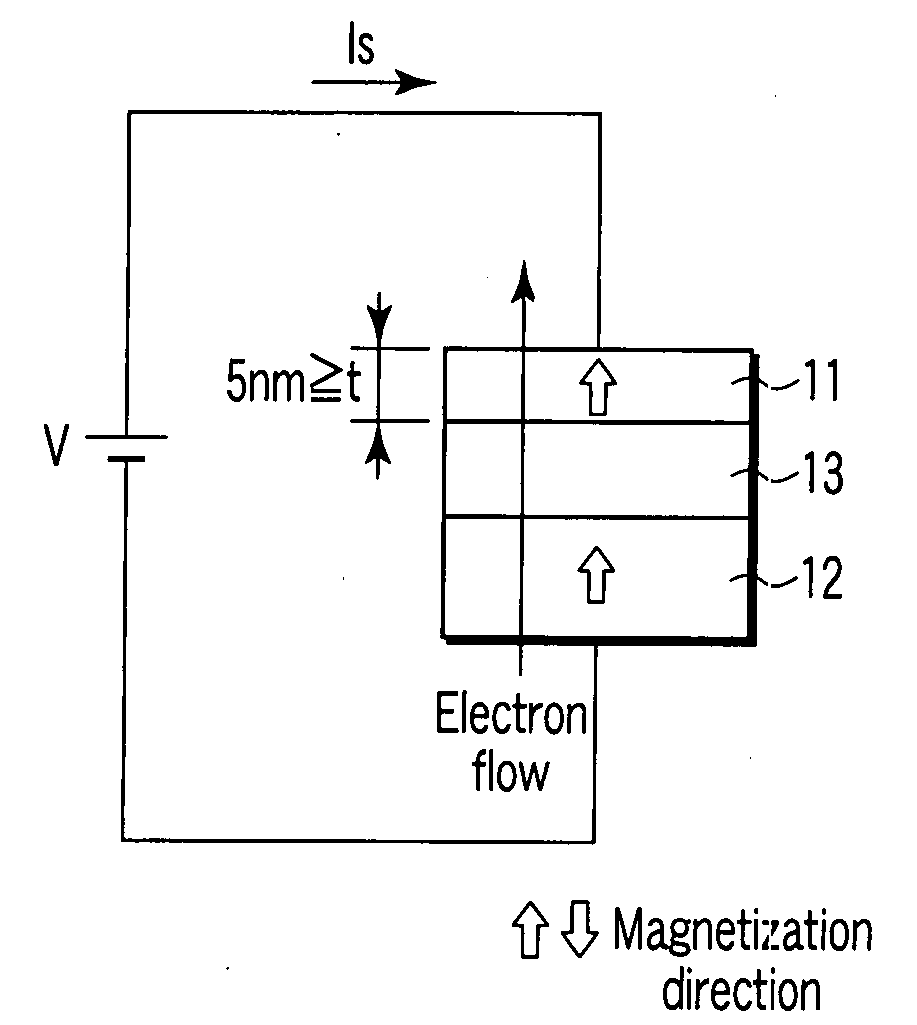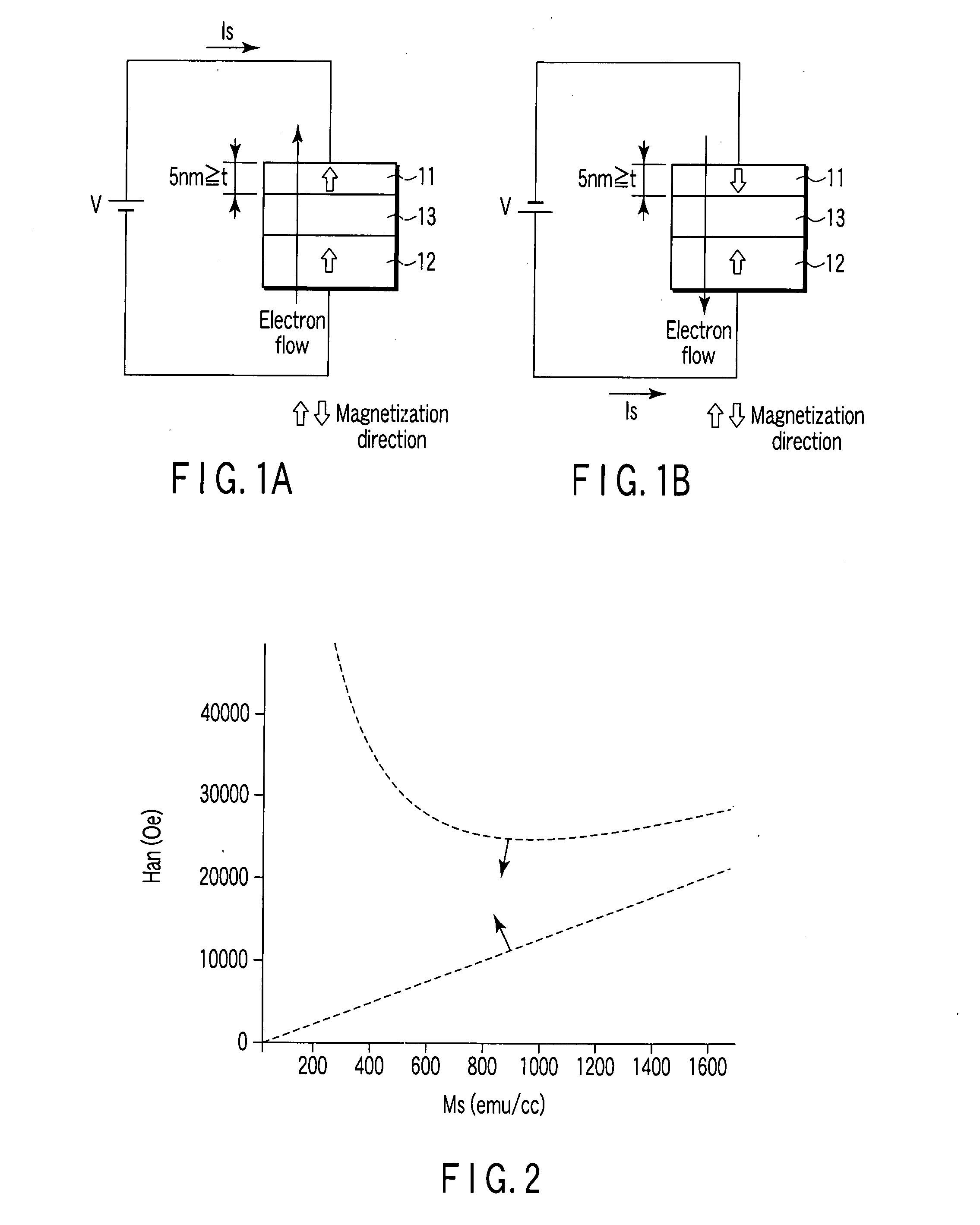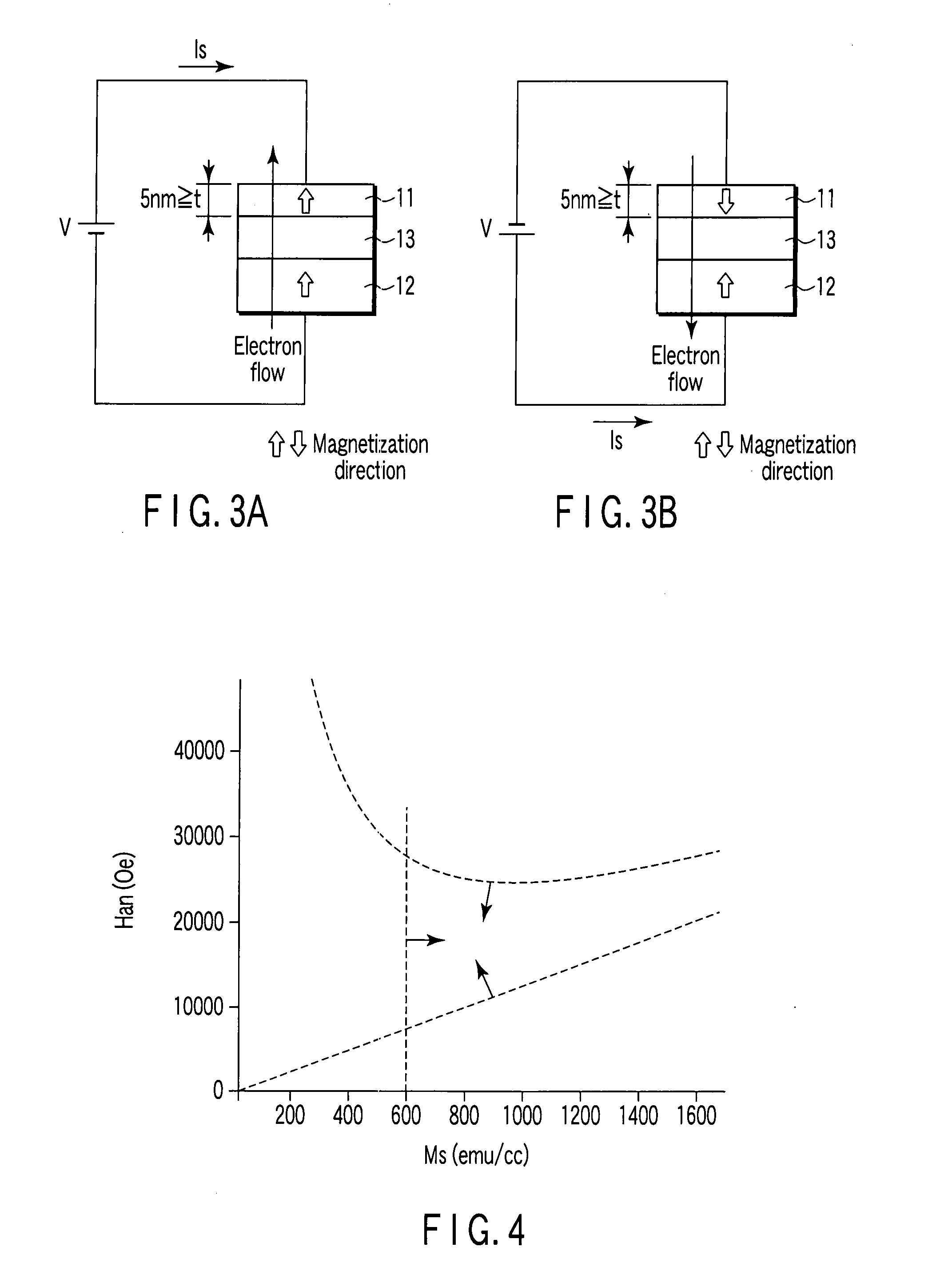Magnetic recording element and magnetic memory
a recording element and magnetic memory technology, applied in the field of magnetic recording elements and magnetic memory, can solve the problems of difficult magnetic field localization, inability to obtain magnetic field with enough magnitude for magnetization reversal, and difficulty in this techniqu
- Summary
- Abstract
- Description
- Claims
- Application Information
AI Technical Summary
Benefits of technology
Problems solved by technology
Method used
Image
Examples
first embodiment
(1) First Embodiment
[0064]FIGS. 1A and 1B are side views showing a structure of a magnetic recording element of a first embodiment.
[0065]A magnetic free layer 11 has a variable magnetization, and a direction of easy axis of magnetization thereof is in a perpendicular direction to the film plane. A magnetic pinned layer 12 has a magnetization fixed in a direction perpendicular to the film plane. A non-magnetic barrier layer 13 is arranged between the magnetic free layer 11 and the magnetic pinned layer 12.
[0066]The magnetic free layer 11 is made of a magnetic material in which a relation between the saturated magnetization Ms (emu / cc) and the anisotropy field Han (Oe) satisfies Han>12.57 Ms and Han−1+12.57 Ms, and whose thickness is 5 nm or less.
[0067]The magnetic pinned layer 12 is constituted by the magnetic material. A magnetization direction of the magnetic pinned layer 12 is fixed because of, for instance, an anti-ferromagnetic layer. The non-magnetic barrier layer 13 is constit...
second embodiment
(2) Second Embodiment
[0073]FIGS. 3A and 3B are side views showing a structure of a magnetic recording element of a second embodiment.
[0074]A magnetic free layer 11 has a variable magnetization, and a direction of easy axis of magnetization thereof is a perpendicular direction to the film plane. A magnetic pinned layer 12 has a magnetization fixed in a direction perpendicular to the film plane. A non-magnetic barrier layer 13 is arranged between the magnetic free layer 11 and the magnetic pinned layer 12.
[0075]The magnetic free layer 11 is made of a magnetic material in which a relation between the saturated magnetization Ms (emu / cc) and the anisotropy field Han (Oe) satisfies Han>12.57 Ms and Han−1+12.57 Ms, and whose thickness is 5 nm or less.
[0076]Further, the saturated magnetization Ms of the magnetic material constituting the magnetic free layer 11 is set to a value exceeding 600 emu / cc. This value is necessary to obtain an MR ratio 20% or more, the MR ratio being an index indic...
third embodiment
(3) Third Embodiment
[0083]FIGS. 5A and 5B are side views showing a structure of a magnetic recording element of a third embodiment.
[0084]A magnetic free layer 11 has a variable magnetization, and a direction of easy axis of magnetization thereof is a perpendicular direction to the film plane. A magnetic pinned layer 12 has a magnetization fixed in a direction perpendicular to the film plane. A non-magnetic barrier layer 13 is arranged between the magnetic free layer 11 and the magnetic pinned layer 12, and an insertion layer 14 is arranged between the magnetic free layer 11 and the non-magnetic barrier layer 13.
[0085]The magnetic free layer 11 is made of a magnetic material in which a relation between the saturated magnetization Ms (emu / cc) and the anisotropy field Han (Oe) satisfies Han>12.57 Ms and Han−1+12.57 Ms, and whose thickness is 5 nm or less.
[0086]Further, the insertion layer 14 is constituted by the magnetic material, and its saturated magnetization Ms is set to a value e...
PUM
 Login to View More
Login to View More Abstract
Description
Claims
Application Information
 Login to View More
Login to View More - R&D
- Intellectual Property
- Life Sciences
- Materials
- Tech Scout
- Unparalleled Data Quality
- Higher Quality Content
- 60% Fewer Hallucinations
Browse by: Latest US Patents, China's latest patents, Technical Efficacy Thesaurus, Application Domain, Technology Topic, Popular Technical Reports.
© 2025 PatSnap. All rights reserved.Legal|Privacy policy|Modern Slavery Act Transparency Statement|Sitemap|About US| Contact US: help@patsnap.com



